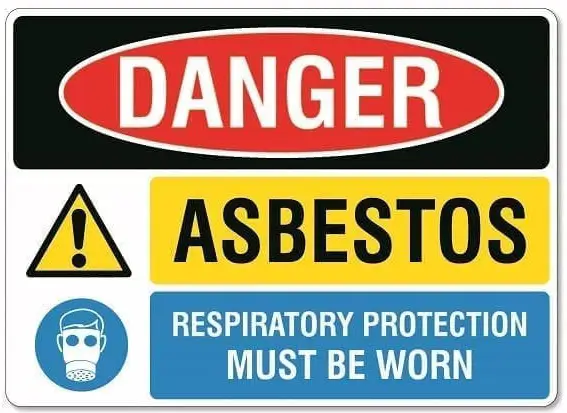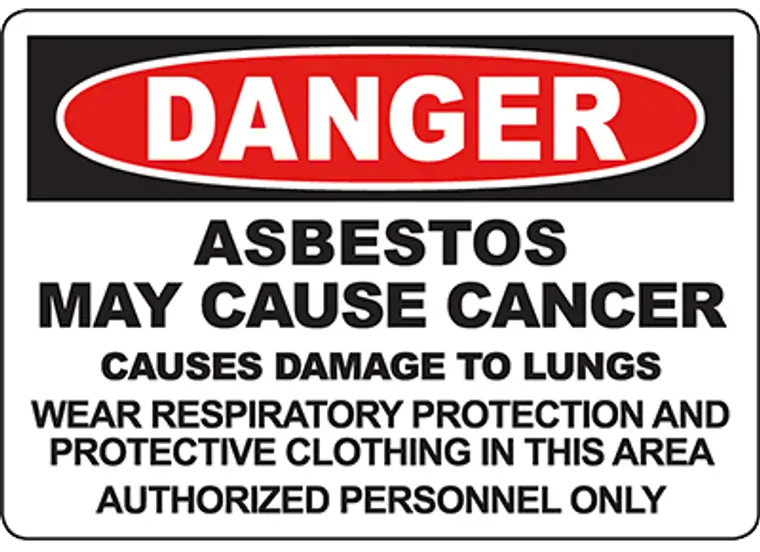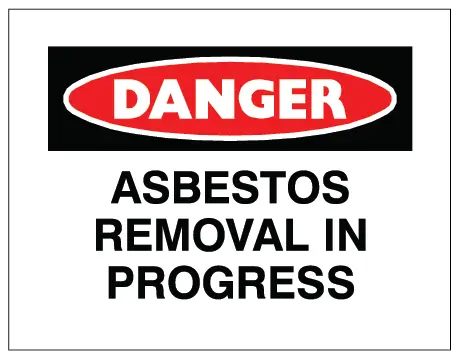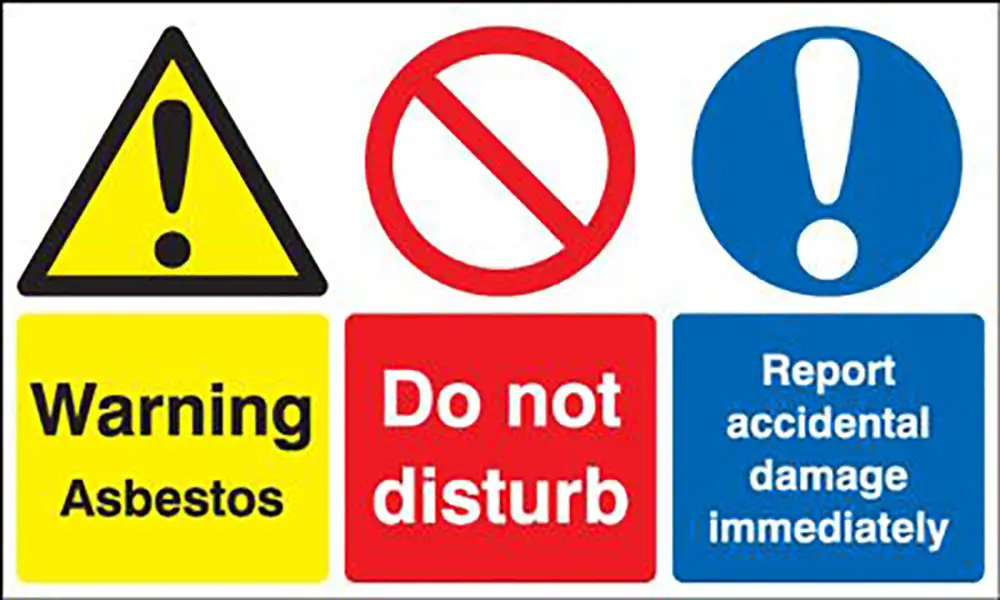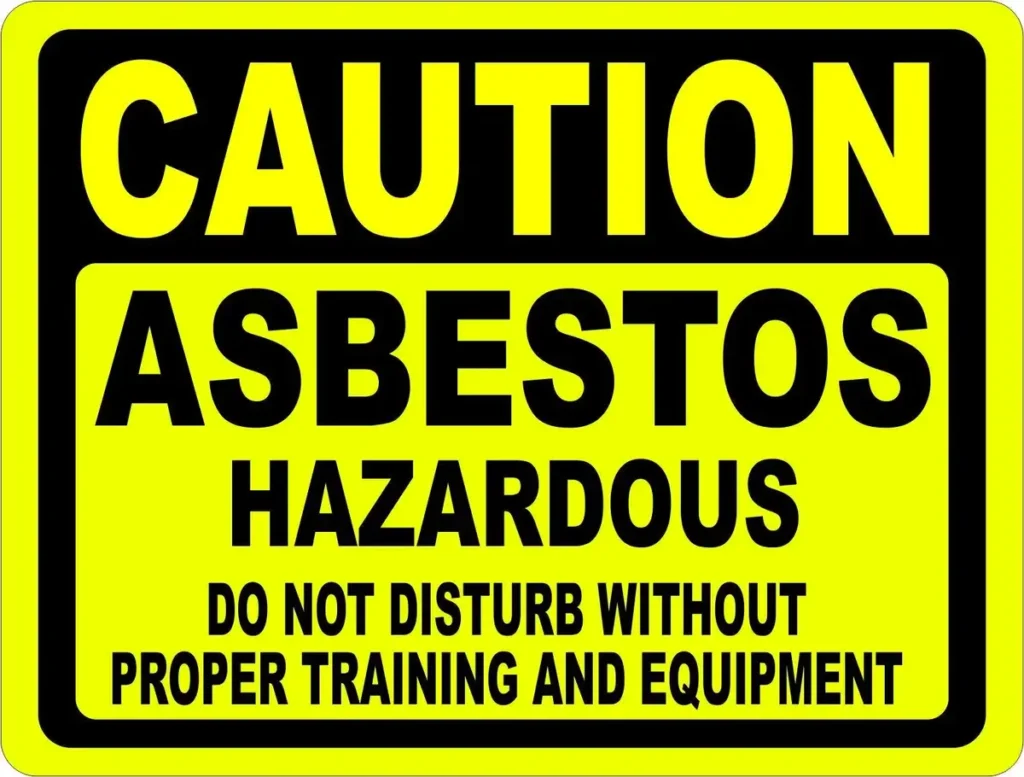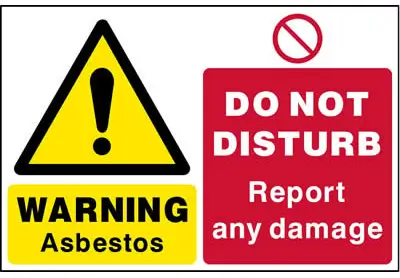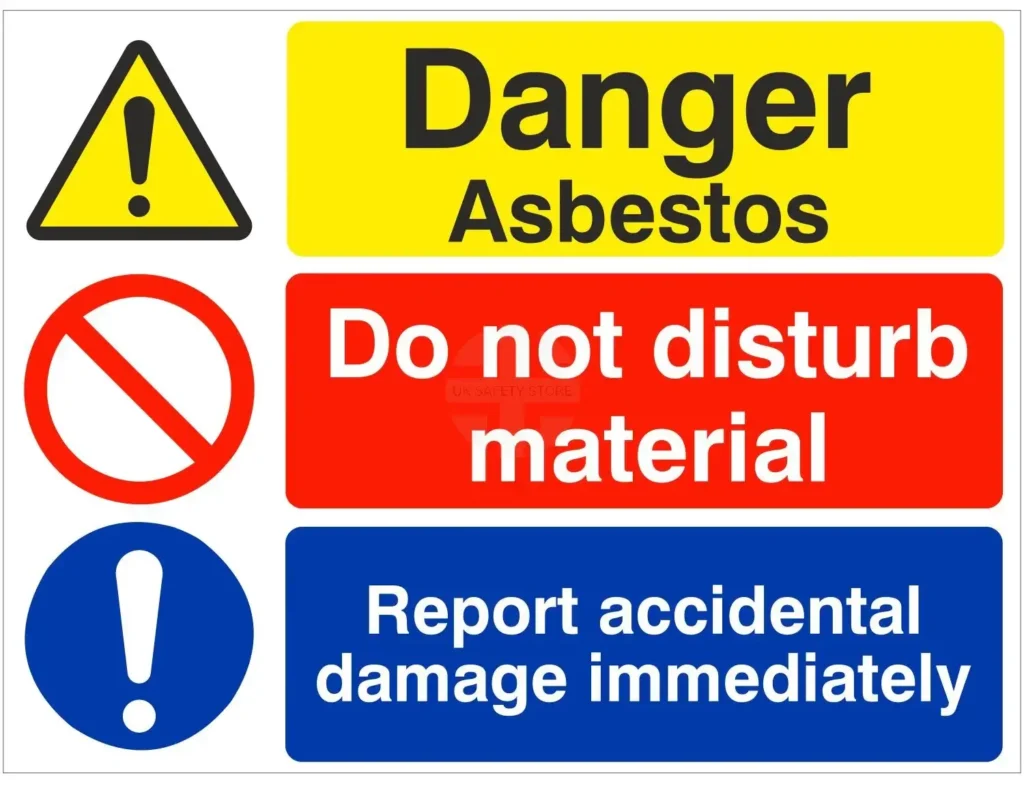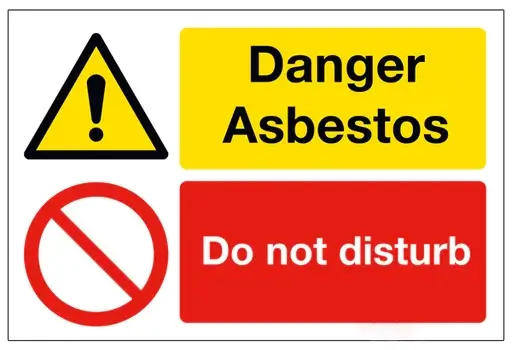Asbestos is a dangerous material that, when disturbed, releases harmful fibers into the air. Exposure to these fibers can lead to serious health conditions, such as asbestosis, lung cancer, and mesothelioma. Because of these risks, it’s essential to be aware of asbestos safety signs and what they mean.
Asbestos Safety Signs
Asbestos Safety Signs are warning signs used to indicate the presence of asbestos-containing materials (ACMs) in specific areas. These signs serve to alert individuals about potential health risks, such as inhaling asbestos fibers, which can cause serious lung diseases. They provide clear instructions on precautions, such as restricted access, the need for personal protective equipment (PPE), and guidelines for safe handling to prevent exposure.
Common in construction, industrial, and older buildings, these signs help ensure compliance with safety regulations and protect workers and the public from asbestos hazards.
Why Asbestos Safety Signs Are Important?
Asbestos safety signs play a crucial role in protecting individuals from exposure. Whether on construction sites, in older buildings, or in specific industrial areas, these signs serve as warnings to workers and the public. They indicate the presence of asbestos-containing materials (ACMs) and outline the necessary precautions that must be taken to minimize the risk of exposure.
Key Asbestos Safety Signs and Their Meanings
1. Asbestos Hazard Warning Sign
This sign is often the most recognizable and displays a clear message such as “Danger: Asbestos” or “Asbestos Hazard Area.” It warns people not to enter certain areas without proper protective equipment (PPE) or training.
Key Features:
- Bold Warnings: Phrases like “Danger: Asbestos.”
- Visible Colors: Red, black, and white for attention.
- Symbols: Often include skulls, and biohazard icons.
- Access Control: Restricts entry to trained individuals.
- Health Risks: Warns of asbestos-related diseases.
These signs are common in older buildings, construction sites, and industrial areas to prevent exposure and ensure safety compliance.
2. Restricted Area Sign
Asbestos Restricted Area Signs are used to mark areas where asbestos-containing materials (ACMs) are present, limiting access to protect people from exposure. These signs ensure that only authorized and trained personnel, equipped with proper protective gear, can enter these hazardous zones.
Key Features:
- Clear Warnings: Phrases like “Restricted Area” or “Authorized Personnel Only.”
- Asbestos Hazard Notice: Indicates asbestos presence and related dangers.
- Access Control: Limits entry to trained, authorized individuals.
- Protective Gear Requirement: Informs that PPE, like respirators, is mandatory.
These signs are crucial in locations like construction sites, industrial facilities, or older buildings where asbestos may pose a serious health risk.
3. Respiratory Protection Required Sign
An Asbestos Respiratory Protection Required Sign is used to warn individuals that entering a specific area with asbestos-containing materials (ACMs) requires wearing respiratory protection. This is essential to prevent inhalation of harmful asbestos fibers, which can cause serious health issues like lung disease.
Key Features:
- Clear Message: Phrases like “Respiratory Protection Required” or “Wear Respirator for Asbestos.”
- Visual Symbol: Often includes an icon of a respirator mask.
- Mandatory PPE: Instructs individuals to wear proper respiratory protection before entering.
- Health Warning: Alerts to the dangers of asbestos exposure.
These signs are typically seen in areas where asbestos is being handled, removed, or where there’s a risk of airborne asbestos fibers, such as construction sites and older buildings.
4. Asbestos Removal In Progress Sign
An Asbestos Removal In Progress Sign is used to alert people that asbestos is actively being removed from a specific area. It warns individuals to stay out of the area unless they are trained and equipped with the necessary protective gear to avoid exposure to hazardous asbestos fibers.
Key Features:
- Clear Message: Warnings like “Asbestos Removal In Progress” or “Danger: Asbestos Work.”
- Restricted Access: Limits entry to authorized personnel only.
- Health Hazard Warning: Indicates the potential dangers of asbestos exposure.
- PPE Requirement: Informs that protective equipment, like respirators, is mandatory.
These signs are commonly found at work sites during asbestos abatement projects, helping to ensure the safety of workers and the general public.
5. Do Not Disturb Asbestos Sign
A Do Not Disturb Asbestos Sign warns people not to interfere with materials that may contain asbestos. This sign is used to prevent accidental exposure to asbestos fibers, which can be released when the material is disturbed or damaged.
Key Features:
- Clear Warning: Messages like “Do Not Disturb Asbestos” or “Caution: Asbestos Material Present.”
- Visual Symbols: May include warning icons for added visibility.
- Risk Prevention: Emphasizes that handling or disturbing the material could release dangerous fibers.
- Safety Reminder: Encourages caution around asbestos-containing areas.
These signs are typically found in buildings with asbestos-containing materials (ACMs) that are intact and not currently being removed, helping to minimize risk by preventing accidental disruption.
Who Needs to Understand These Signs?
Everyone working in or around areas that may contain asbestos should be able to identify these signs and understand their meanings. This includes:
- Construction Workers
Many older buildings still contain asbestos. Workers involved in renovations, demolitions, or maintenance must know the risks and follow all safety guidelines. - Building Managers
For those responsible for managing properties, especially older buildings, understanding asbestos safety signs is critical to ensure compliance with regulations and to protect the safety of tenants and visitors. - General Public
While less common, it’s still possible for the general public to encounter asbestos safety signs in certain areas, such as construction zones or old industrial sites. Understanding these signs can help avoid accidental exposure.
How to Stay Safe Around Asbestos
To minimize the risk of asbestos exposure, always adhere to the following guidelines when encountering asbestos safety signs:
- Follow Instructions: If a sign indicates the need for PPE, ensure you are properly equipped before entering the area.
- Do Not Enter Restricted Zones: Unless you are authorized and trained to handle asbestos, never enter restricted areas.
- Report Damaged Signs or Barriers: If you notice damaged or missing asbestos signs, report them to the relevant authorities to maintain safety for everyone.
Conclusion
Understanding asbestos safety signs is essential for protecting yourself and others from the dangers of asbestos exposure. Whether you’re a worker, building manager, or simply someone who may encounter these signs in day-to-day life, being aware of their meaning and the necessary precautions can prevent serious health risks. Always stay alert and informed to ensure the safety of everyone in potentially hazardous environments.












